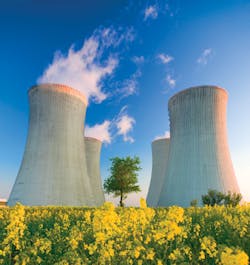The future of fossil fuels
Greg Aliff and Branko Terzic, Deloitte LLP, McLean, Va.
The rapid growth in renewable energy production for wind and solar in many parts of the United States, such as Texas, and around the world have led some pundits to predict the demise of fossil fuels as the world's predominate source of energy. In the case of electricity, recent double-digit increases in renewable energy have led some pundits to forecast an early demise of coal as the predominate fuel.
In a related development, the introduction of the possibility of massive electrification of the transportation sector (in the form of the electric car) has led to projections that oil will lose its place as the dominant transportation fuel.
These predictions are highly unlikely.
Most objective projections show that reliance on fossil fuels is both necessary and economic under almost every scenario that balances growing energy demand with available supply. Policymakers need therefore to incorporate in their planning the fact that reliance on fossil fuels will continue well into the future for both electricity production and transportation.
The likelihood that coal will continue to dominate as fuel for electricity production is based on the sheer number of power plants and the total contribution from coal-fired power plants to global electricity production. This is especially true of old units in the US and new coal-fueled facilities in China and India.
Coal is globally the dominant fuel for electricity production. In 2008 coal provided the fuel for 41% of electricity produced while natural gas provided 20%, hydroelectric 16%, and nuclear 15%. In the US, coal fueled 50% of electric production while in China it provided 78% and India 59%. In addition, today's projections for coal use in China and India are for increases not decreases.
In the US, natural gas has been promoted as a "bridge" fuel to fill the supply gap as some see US reliance on coal shrinking and a shift to renewable energy. However, since both coal and natural gas are fossil fuels, emitting carbon dioxide when their energy content is converted to electricity, substitution of one fossil fuel for another does not make a case for the demise of "conventional" fuel in electricity production. Nor is the substitution of natural gas for coal a universal possibility.
In the US, with a current drop in natural gas prices to below $3 per MCF (as of September 1, 2009) and recent expansion of the reported resource base, it looks as if natural gas may be the fuel selected for new base-load electric generating plants. However, a projection of natural gas dominance as electric fuel is difficult to make because of a number of factors. Among these is the risk (observed by state regulators who must approve additions to base-load in many states) of much higher natural gas prices in the near future based on the prior volatility and price experience. Natural gas prices were up to $8 per MCF only a year ago.
The European situation and history with respect to natural gas supply and prices is quite different than that in the US. European Union (EU) members rely predominately on natural gas imports from Russia. The European market has not seen US-style natural gas price decreases, or prior volatility, due to a number of factors including the pricing in the EU of natural gas against a market-basket of oil products.
The situation in Asia and the far East is quite different as well. For Asian countries, including Japan, which rely on international LNG shipments, natural gas prices have been subject to both long-term and spot pricing contracts that do not move with the North American natural gas markets.
Reduction in future fossil-fired generation could come from increased electricity production from nuclear power plants, which today produce 15% of electricity supply globally. However, no one projects that nuclear will or could supplant coal as the dominant electricity producer globally in the foreseeable future.
It is true that new nuclear power plants are under construction, on order and planned. But the number of new nuclear power units will likely only provide moderate growth in total nuclear production as existing nuclear power plants come up for retirement in the next two decades. Another reason nuclear power will not displace all fossil fuels in our lifetimes is that there is, in many countries, still political opposition to all things "nuclear."
This leaves the possibility that renewable energy sources such as solar and wind could displace conventional fuels in the next two decades. In our opinion, that is not likely to happen.
Most experts agree that renewable energy production will expand in the future. Such expansion will come from both the construction of new large-scale facilities and the installation of distributed solar and wind generation units at homes, commercial buildings, and factories. Renewable energy will likely continue to grow at a double-digit pace. However, total solar and wind electricity production is not expected to begin to match production from conventional fuel, coal, and natural gas.
Renewable energy production starts from a very small base today. On a global basis, electricity production from wind produces 4.1% of total electric power. Solar contributes around 1.4%.
Inventor and futurist Ray Kurzweil recently observed that "We're doubling the amount of solar energy we produce every two years, which means we're only eight doublings away from meeting all our energy needs." We would observe that "eight doublings" is a lot to wish for in the near future.
One answer to the question of the near future role of conventional energy comes from a comprehensive study of the global energy situation provided by the US National Petroleum Council. The NPC, established in 1947 as an advisory body to the President, currently reports directly to the Secretary of Energy. In July 2007 the NPC issued a report of the global oil and gas situation out to 2030 entitled The Hard Truths: Facing The Hard Truths About Energy. This report was the product of the work of over 350 direct participants with input from a thousand others and 100 earlier reports.
The main conclusions included the following points.
- The world is not running out of energy resources, but there are accumulating risks to continuing expansion of oil and natural gas production from the conventional sources relied upon historically. These risks create significant challenges to meeting projected total energy demand.
- To mitigate these risks, expansion of all economic energy sources will be required, including coal, nuclear, biomass, other renewables, and unconventional oil and natural gas.
- Each of these sources faces significant challenges including safety, environmental, political, or economic hurdles, and imposes infrastructure requirements for development and delivery.
- Policies aimed at curbing carbon dioxide emissions will alter the energy mix by increasing energy-related costs and requiring reductions in demand growth.
National legislation and international agreements to limit greenhouse gas emissions (Copenhagen and its successor agreements) may diminish the percentage contribution of conventional fuels in the future energy mix. This would occur through the "leveling of the playing field" as fossil-fueled electric generation incurs costs due to the cost of emission taxes or credits, or the necessity for carbon capture and storage.
The future should also see lowering of costs for renewable energy due to improved manufacturing and introduction of new technologies. In addition, solar and wind will benefit from the imminent introduction of large-scale economic electricity storage as well as the development of a "smart grid."
However, increasing demand for energy and especially increases in demand for electricity, if the transportation sector is transitioned from internal combustion engines to electric motor vehicles, will require not only all the renewable energy likely to be developed, but continuation of fossil- and nuclear-produced power as well.
In the US, some high visibility proposals were made to substitute natural gas for gasoline and diesel fuel in all vehicles and the proponents quickly scaled back the proposal, for practical reasons, to only switch large vehicles in fleets.
So, how do we reconcile this need for more conventional fuels in the future with our scientific "consensus" that our release of carbon dioxide into the atmosphere, a product of our fossil fuel conversion to motive power, is the cause of unnatural climate change? We don't. We adapt.
We either remove carbon dioxide during the energy conversion process or we remove it from the atmosphere later (sometimes called geo-engineering.) Of course we can also lower our individual and collective consumption, but even the most aggressive estimates of fuel efficiency (misnamed sometimes as energy conservation) don't solve the greenhouse gas problem.
Efficiency is the needed, economic, and the first choice for greenhouse gas mitigation. But efficiency itself is not enough to allow for both the retirement of fossil fueled electricity production units and to supply future power to the two-thirds of the world's population with no or intermittent electric service today.
To remove carbon dioxide from the atmosphere, the world needs viable carbon capture and sequestration/storage (CCS) technology. The technology must be on a scale able to retrofit the 800 MW and larger coal-fueled power plants in operation in many countries. It does not exist in commercial form today. Such equipment may be available in the future, only if the vital dozen or more pilot projects proposed, and estimated to cost more than a billion dollars each, are funded by government and industry.
The Group of Eight major industrialized countries (G8) meeting last year called for an investment in 20 new demonstration CCS projects by 2010. There are today only a handful of CCS projects funded by the entire G8. At today's pace of investment CCS will not be ready in time.
This may leave only geo-engineering or adaptation as the remaining options. Geo-engineering in the form of atmospheric intrusion – by adding chemicals or particles to the atmosphere to create cooling - runs the risks of unintended consequences. Atmospheric removal of carbon dioxide on a scale massive enough to have any effect has its own industrial, economic, and international equity problems.
Thus, as the NPC concluded in Hard Truths, "Coal, oil, and natural gas will remain indispensable to meeting total projected energy demand growth." Adaptation, to meet climate change objectives, will likely require, as reported by the NPC, the introduction of massive energy efficiency programs, the addition of new nuclear power supply, and most significantly, the accelerated development of carbon capture and storage technologies to enable the necessary continuation of electricity production from abundant fossil fuels.
The NPC concluded that conventional energy sources are here to stay for quite a while. The trick will be to continue this use without crossing the climate change "tripping point."
About the authors
More Oil & Gas Financial Journal Current Issue Articles
More Oil & Gas Financial Journal Archives Issue Articles
View Oil and Gas Articles on PennEnergy.com





